
With tight streets and spare parking, many tourists opt for two-wheeled transportation means, including bicycles. Though the sun had broken out over Key West, the puddles in many of the roadways were full of rainwater from storms earlier in the afternoon.
When I finally arrived in Key West on the Saturday during my vacation, it had stopped raining, the sun was peeking out of the clouds, and things were looking better. The first order of business was to grab a fish sandwich at a local eatery. To that end, I parked in a spot near downtown Key West and accidentally purchased the rights to a parallel space until 11 p.m. - through a pricey fee. It was then that I knew I would be walking most of the day, just to get my money's worth.
From the seafood restaurant where I ate lunch, I planned to stroll down Duval Street, which is lined with mostly bars and T-shirt shops. Interested in neither alcohol nor T-shirts, I expected for Duval to be a quick stroll. Truth be told, touristy things - the act of making sure one doesn't miss any of the must-see sights of a particular location - do not hold much appeal to me, particularly when I'm traveling alone. When I went to San Francisco with a friend last October, though, I did the touristy things, and they were fine. But alone, I'd prefer to hit the back streets, see the historic homes most people don't see and sometimes meet some of the locals that make a place what it truly is.
This strategy was akin to the one in New Orleans, which I visited in late 2007. Duval Street, much like Bourbon Street in the Big Easy, is full of drunken revelers wandering into traffic and nearly getting creamed by oncoming cars and scooters, a popular mode of transportation in Key West. But there was one key difference between New Orleans and Key West: In New Orleans, tourists buy beads. In Key West, they buy bad T-shirts.
Besides the public drunkenness and public nudity at rooftop bars, Key West is widely known for its geographical extremes: It contains the southern terminus of U.S. 1 and the southernmost point in the continental United States. It's ironic that I would be in Key West when I have never seen the northern terminus of U.S. 1 in Fort Kent, Maine, a state where I was born and raised. But something tells me that up there in Maine, it's not such a big deal. It's only a sign, after all.
Nevertheless, I was obligated to see some of these things just to say I did. A friend said I absolutely must get my photo taken with the buoy that marks Key West's southernmost point. But after I saw the line to do that very thing, doing something that everyone else was doing just didn't seem to fit the spirit of my trip. Maybe next time.
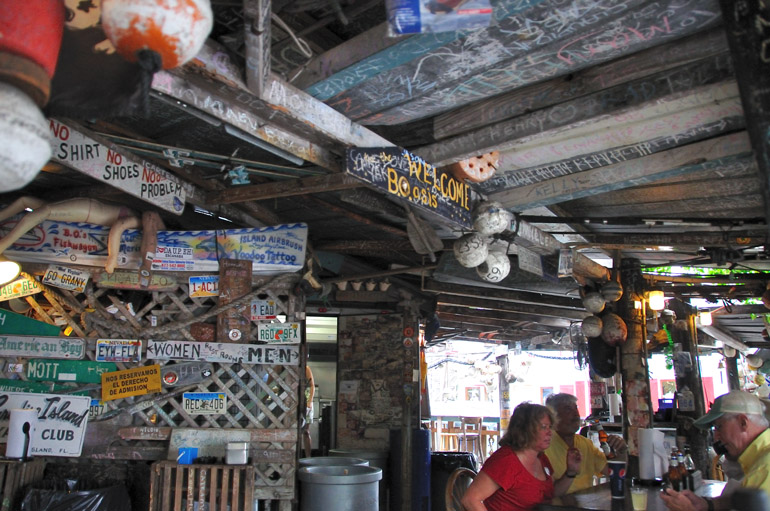
Being a Maine native, I appreciate the cuisine at hole-in-the-wall seafood restaurants. That's why B.O.'s Fish Wagon on Caroline Street in Key West appealed to me: It was less than a hole in the wall. In fact, it didn't really have walls. A wooden canopy with buoys hanging from the boards covered the dining area and the core of the eatery, the kitchen, which is the only part of the restaurant that had a door. The only walls to speak of were actually fences. I can't imagine that it's the greatest place to eat during a hurricane. In the upper left corner of this photo, a sign reads "No shoes, no shirt, no problem," reflecting the less-than-casual Florida lifestyle enjoyed in Key West.

My report on the actual food at B.O.'s Fish Wagon will be coming later, if I'm so inclined and motivated to tell you about it.
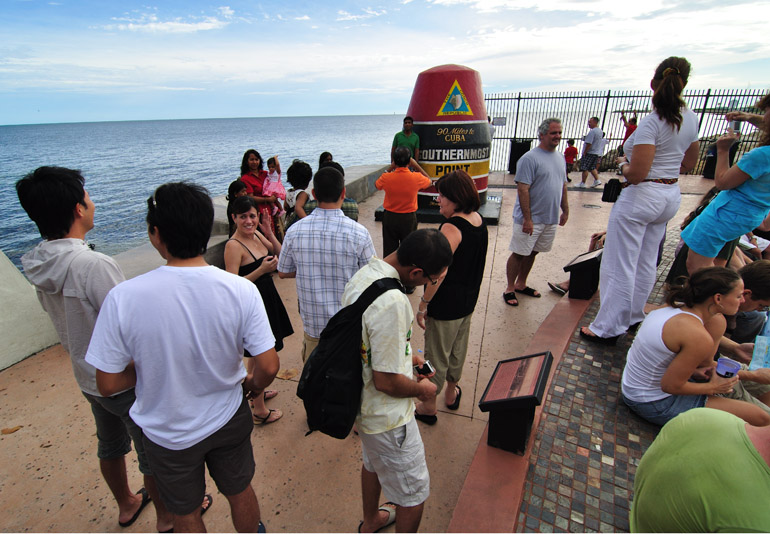
There is quite a bit going on in this photo, but for the most part, it's just a bunch of tourists taking photos with or waiting for a chance to take photos with the buoy that marks the southernmost point of the lower 48 states. I settled for cutting into the middle of the line and leaping onto a divider between the sidewalk and the roadway to snap this shot. I would be missing too much of Key West if I were to wait for 30 minutes to get a photo that would be good for nothing more than my Facebook profile.
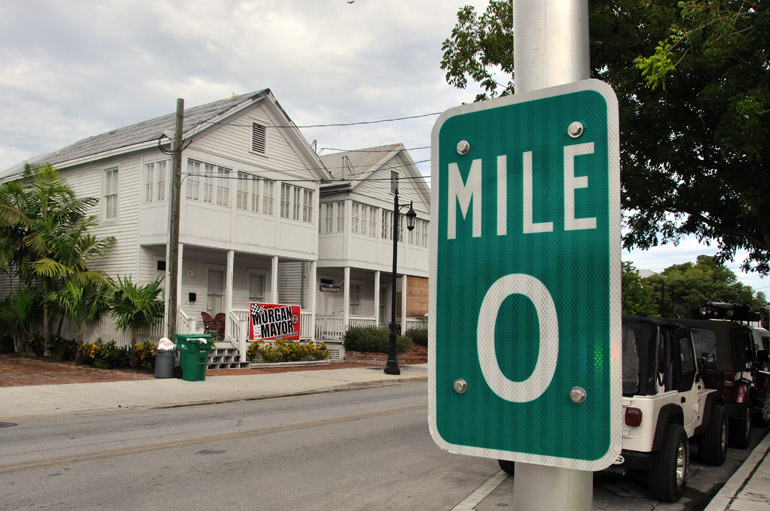
There was less fanfare at the end - or is it the beginning? - of U.S. 1, which is called Truman Street in Key West. The truth is, though, this isn't the only Mile 0 sign I saw in the city. And there were signs that said Key West was home to both the end and the beginning of U.S. 1. I suppose it depends on how you look at it, but I would think that the southernmost extreme would be called the end, and up north, in Fort Kent, Maine, you could find the beginning. But that's just me.
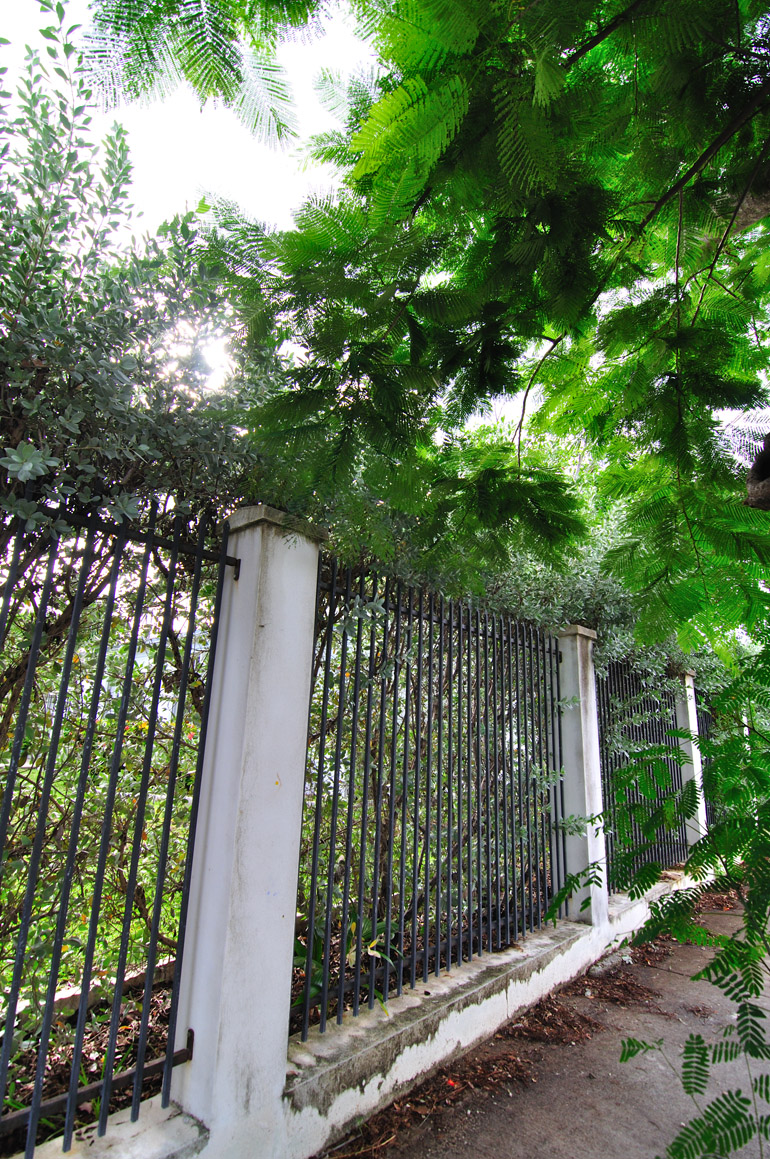
The color that impresses me the most in Florida is green. In late winter and early spring, there is less of it as the dry season is harsh on the local flora. With heavy rain during the summer, though, vegetation blooms with vibrate hues. On this back street in Key West, a royal poinciana tree provided a brilliant green under the late-afternoon sun.
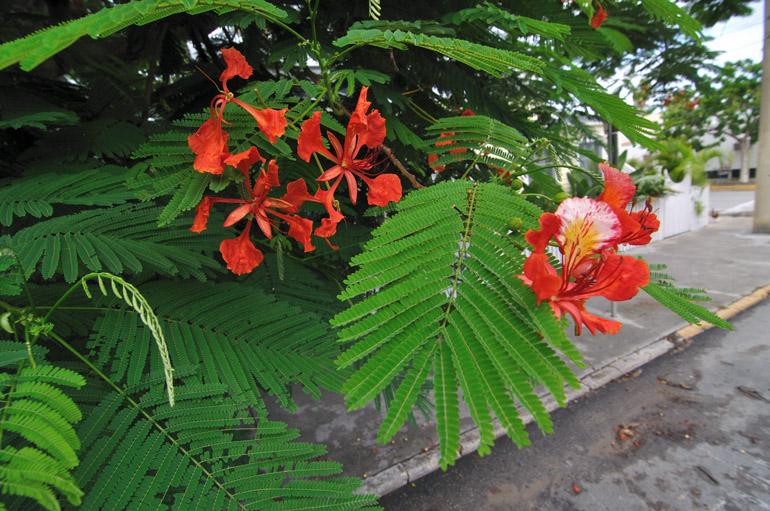
The royal poinciana also contains are great deal of red. In full bloom, these trees must be amazing. In early September, this one wasn't that impressive.

Again with the poinciana trees in the frame, this photo shows probably the most popular form of alternative transportation in Key West: the motor scooter. This one happens to match the color of the house it sits parked in front of. Both the locals and tourists use them.
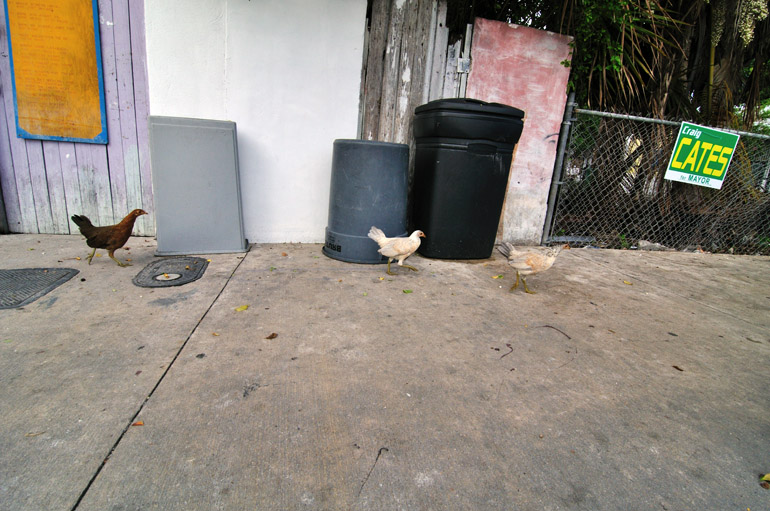
Key West is widely known as a free range for chickens, as well as - ironically - cats, especially at famed author Ernest Hemingway's former home. Tourists share the sidewalks with the birds. I like parallelism in photos, and the intent of this shot was to match the three chickens with the three trash barrels behind them. That didn't work so well, but there's something about the simplicity of this photo that appeals to me.
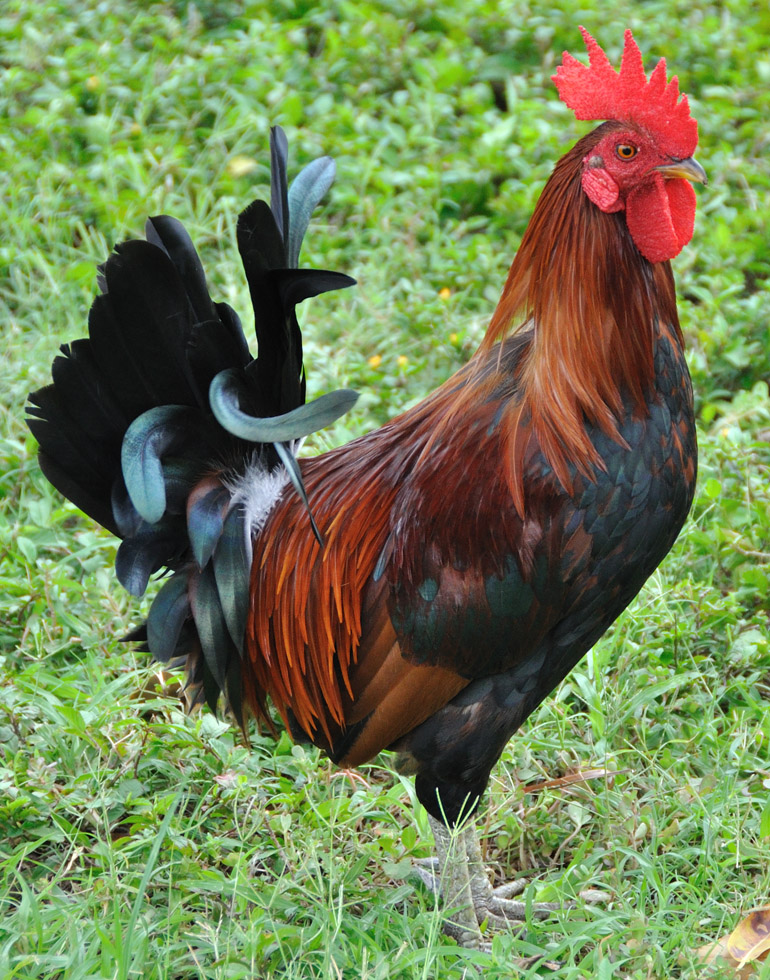
This rooster was involved in a fight with a hen just before I took this photo. The public display of avian domestic violence drew a crowd of tourists eager to take photos. That event was probably the most egregious bandwagon-hopping tourist activity of my entire vacation.



No comments:
Post a Comment